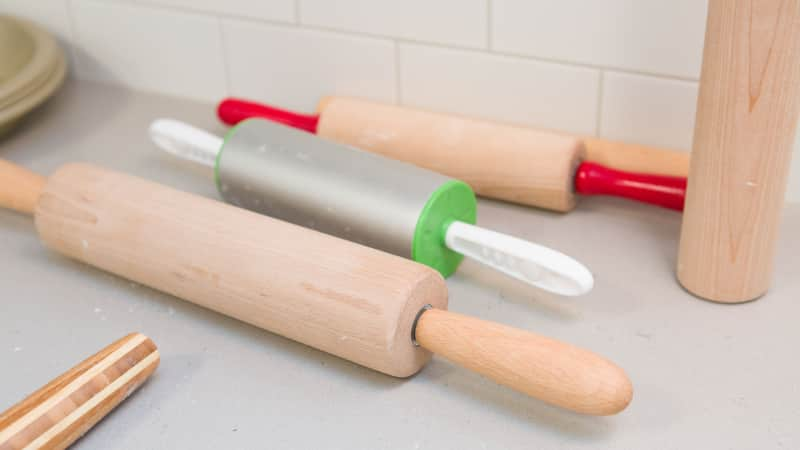Easy Holiday Sugar Cookies
Recipe
Could we find a rolling pin small enough for kids to use but large enough to get the job done right?
Published Sept. 10, 2019.

The test kitchen’s favorite rolling pin is a handle-free model that weighs 1 pound, 9 ounces and measures 19 inches long. We like it because it gives us a direct sense of a dough’s thickness and how hard we are pressing down, but it is designed for adults and could be cumbersome for some kids to use effectively. We wanted to find a rolling pin that would allow kids to adeptly and efficiently roll dough while helping them build confidence when baking. To narrow down our search, we looked at all the models available. Rolling pins come in two main styles: those with handles on each end to assist rolling and those without. There are also two styles of pins without handles: straight dowels or dowels with tapered ends. We purchased six rolling pins--four with handles, one straight dowel, and one tapered dowel--made of various materials, including wood, bamboo, and nonstick-coated steel, priced from $8.99 to $19.99. Two of the pins were designed specifically for children; the rest were designed for adults, but were lighter and smaller than our favorite full-size rolling pin.
Before asking a group of kid testers to test the pins in our lineup, we had adult testers use the models to perform some basic tasks: roll disks of pie dough into 12-inch circles, roll disks of Easy Holiday Sugar Cookie dough between sheets of parchment paper, and roll out soft, stretchy pizza doughs. In each test, we evaluated how easy the pins were to use and how well they performed.
During the pie dough test, it quickly became evident that the length of a pin’s rolling surface and the circumference of its barrel was key. The lengths of flat rolling surface of the pins in our lineup ranged from 5 inches to 13.3 inches. During the pie dough test, we found that the pins with less flat rolling surface were less effective than pins with more; we had to roll them over the dough more times to get the same results as when using a pin with more. Shorter pins tended to leave grooves in the dough because they were shorter than the dough was wide. Given that the bottom of a standard pie plate measures 7 inches across, the pins needed to have at least 6 inches of flat rolling surface to roll out a smooth, uncreased dough round. The circumferences of the pins we chose also varied, ranging from 4 inches to 7.5 inches around. The pins with wider barrels were generally more effective than those with skinnier barrels because they covered more dough with each roll. Our favorites measured at least 7 inches in circumference.
The rolling surface and circumference weren’t the only important factors we looked at. We also wanted a rolling pin t...

The mission of America’s Test Kitchen Reviews is to find the best equipment and ingredients for the home cook through rigorous, hands-on testing. We stand behind our winners so much that we even put our seal of approval on them.

Carolyn is a senior editor for ATK Reviews. She's a French-trained professional baker.

This is a members' feature.